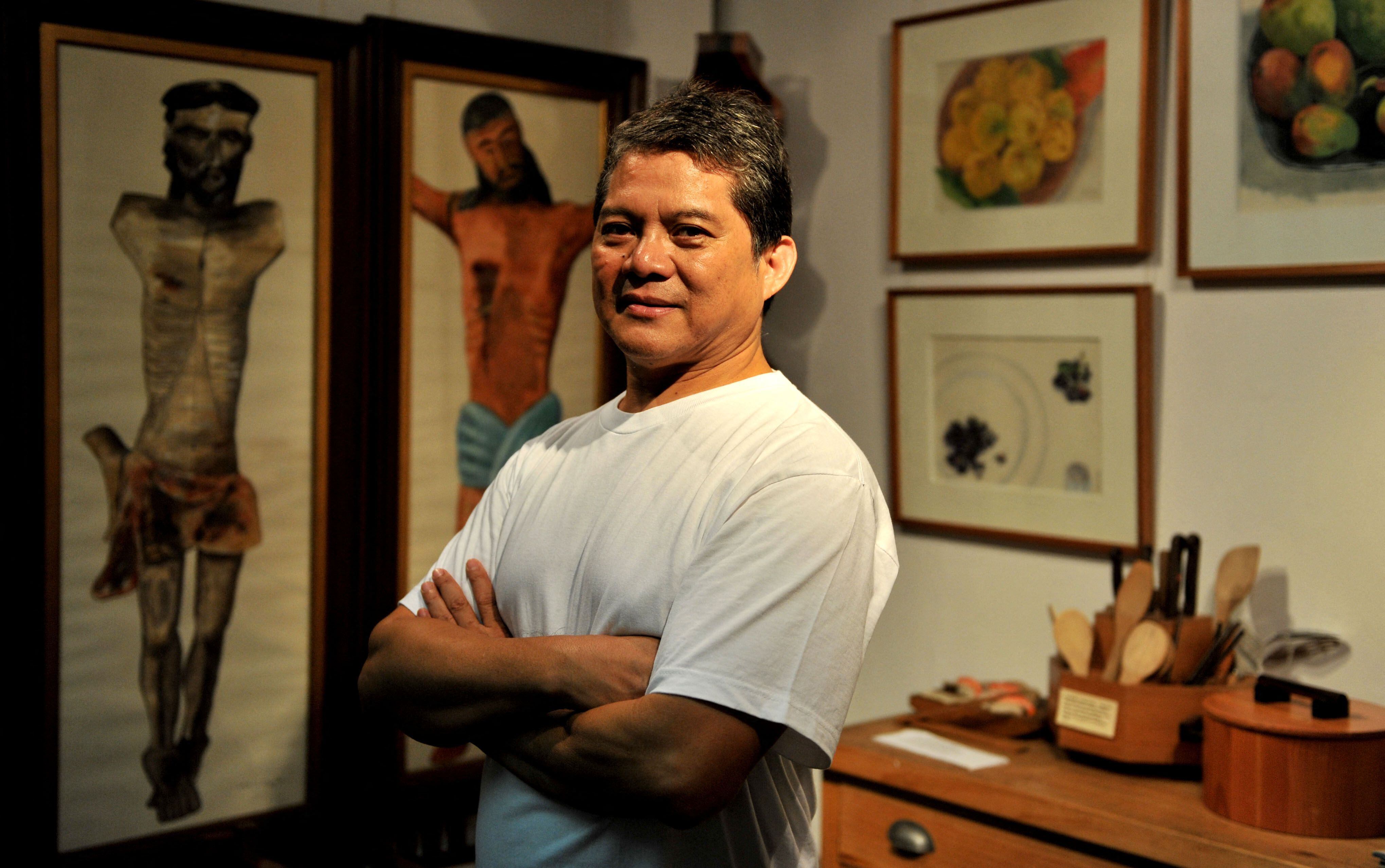
WHY FILIPINO CHEF CLAUDE TAYAG SET OUT TO WRITE THE ULTIMATE BOOK ON ADOBO
When Claude Tayag caught a whiff of the Philippines government's move to standardise adobo, the celebrity chef knew it was a recipe for disaster.
The 2021 initiative meant establishing a committee of chefs to prescribe an official way to make the popular dish – a stew of braised meat, chicken or squid marinated in vinegar and soy sauce.
The idea was quickly scrapped after a national outcry, including hashtags and memes that read: “Leave my adobo alone”.
Tayag also used his public status to write 18 newspaper columns decrying the move.
In response to the uproar, former secretary of trade Ramon Lopez reportedly described the action as a way to create an international awareness of the Philippines' unofficial national dish and counter any confusion caused by the growing popularity of the Mexican adobo with its chilli marinade.
“[It] doesn’t make sense at all because the key characteristic of adobo is its diversity,” Tayag tells The National. “It is not an exaggeration to say the reaction back home was angry because you can’t standardise people’s emotions.
“When you are talking about recipes for adobo, what you are really doing is asking a question and it is this: what does adobo mean to you?”
More than a dish
It is a line of thought Tayag explored in his scathing columns before expanding them in the 2022 co-written book The Ultimate Filipino Adobo: Stories throughout the Ages, which he discussed at the recent Abu Dhabi International Book Fair.
Through interviews with local and expatriate chefs and cultural personalities, the book is a sumptuous love letter to the staple and a celebration of Filipino identity.
According to the book, adobo is not so much a dish but a cooking method. “This explains why it is so versatile and you can braise all kinds of meat like chicken, beef, quail, duck, seafood or just vegetables,” Tayag says.
“There is something for everyone here, for all tastes and incomes, and that’s why it’s a great leveller in the Filipino society and is open to all other cultures.
“But when trying to find the ultimate key of what makes an adobo dish a Filipino version, then it is the vinegar. We don’t use it to add to a marinade, instead it is the primary liquid source for the dish.”
Such a minimal baseline for authenticity allows the Filipino adobo to differ not only between regions but households. Indeed, family is a major theme in The Ultimate Filipino Adobo with subjects as Filipino-American academic Randy Gonzales and California restaurateur Dean Patrick Ramirez describing how their adobo is inspired by generational family recipes.
“The area where you came from, your religious, dietary or even economic restrictions all play their part in the type of adobo you had as a child,” Tayag says.
“It is really those elements that make it an emotional and personal dish. The people I speak to told me that what they are trying to do is recreate the dishes made by their mother and aunties.”
As for why the book eschews cooking instructions, he says adobo is ultimately subject to taste.
“You can basically make it with what is available to you without really needing to import anything. It also has this democratic value in that you serve it with vinegar, fish and soy dipping sauces and let the diner adjust it to their preference,” he said.
“This is different to what you will find in western cookbooks or chef-driven restaurants where you are asking yourself to be thrown out of the venue if you wanted ketchup on the side.”
That said, Tayag does have a personal bug bear when eating adobo. “There is nothing worse than ordering an adobo where the meat or chicken is not crispy,” he says. “It does make you want to kill somebody.”
Preserving heritage
One aspect of the adobo where there is universal agreement, Tayag notes, is that it's best eaten with your hands.
“There are over 140 different languages in the Philippines and many of them have a phrase or words about the significance of eating with your hands,” he says.
“If you walk into the malls in the Philippines during lunch time, you will find staff and business people all eating adobo from a lunch box with a plastic covering on their clothes for protection. And in many cases they are eating with other people.
“The fact that these scenes happen at home and outside shows that they are not just eating a dish for sustenance, but they are being nourished by their heritage.”
That blend of history and adaptability means adobo belongs alongside the likes of the Thai green curry or Mexico’s nachos as a globally renowned dish.
Tayag says the dish is already establishing itself on the US culinary map due to the success of Filipino Michelin restaurant Kasama in Chicago.
In its review, Michelin chefs praised its “creative spin” on traditional Filipino cuisine, particularly the salmon dressed with rich tamarind sauce topped with smoked roe over a bed of melting leeks and a lamb belly dish with peanut curry.
“That is basically adobo food but done in a very western and Instagramable way,” Tayag says. “It also shows how food, like any culture, is evolving …. If you put any Filipino anywhere in the world, you will see some version of adobo being made.”
2024-06-21T18:03:54Z dg43tfdfdgfd